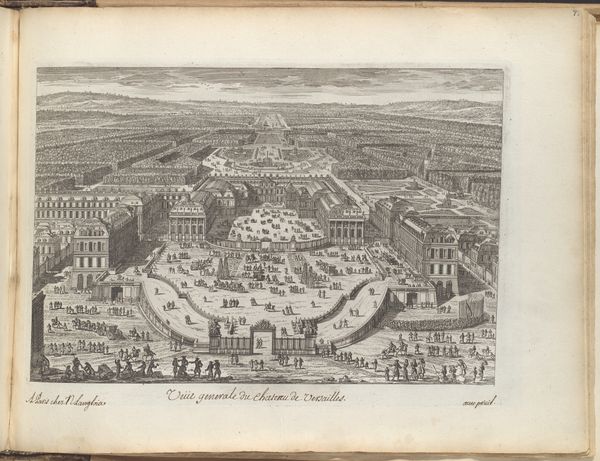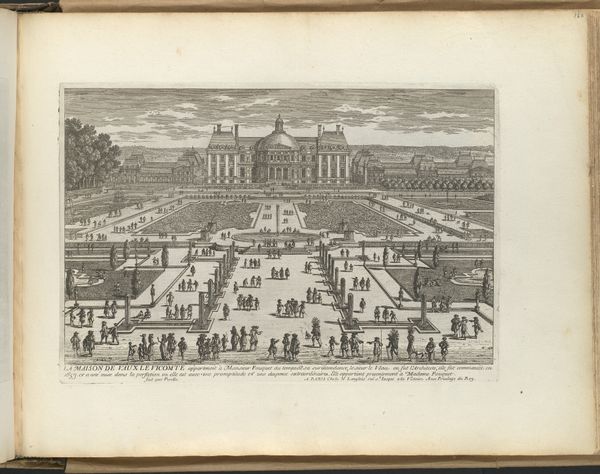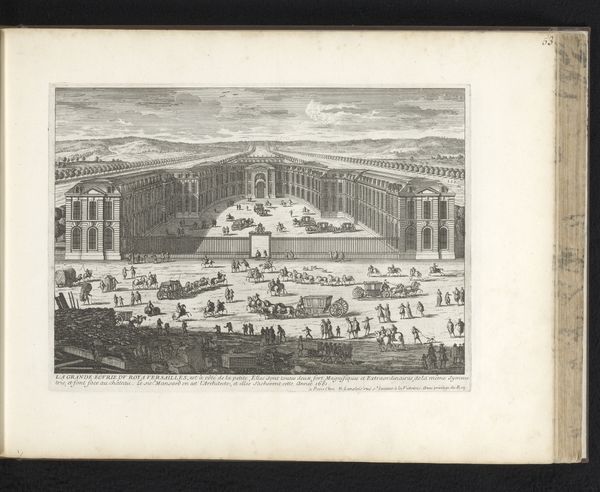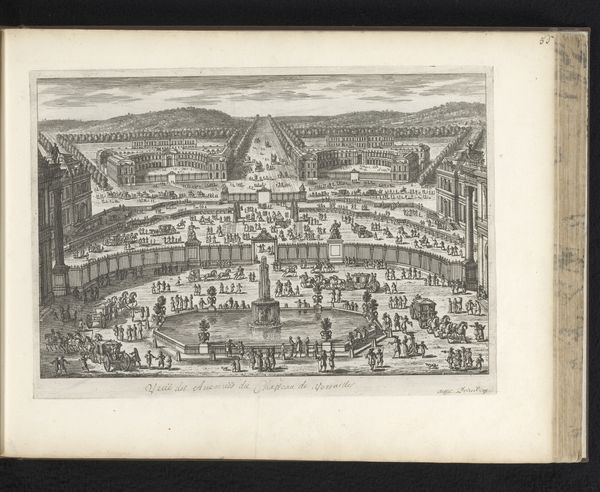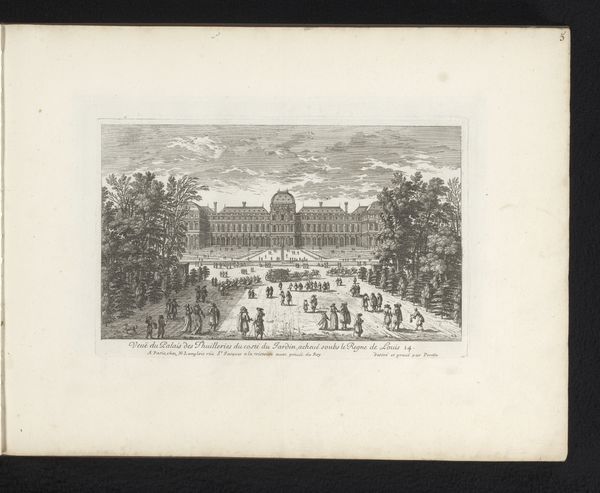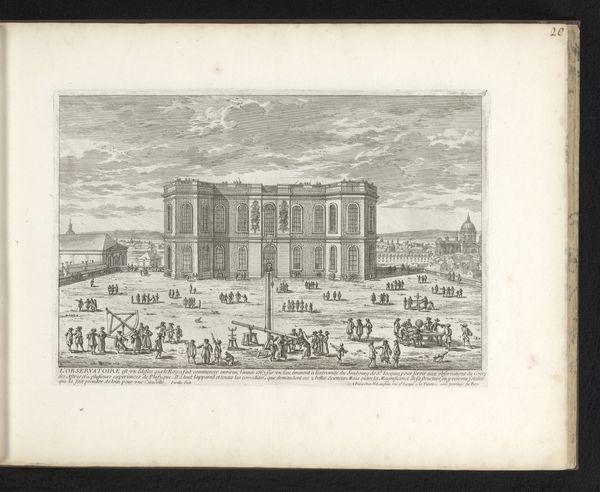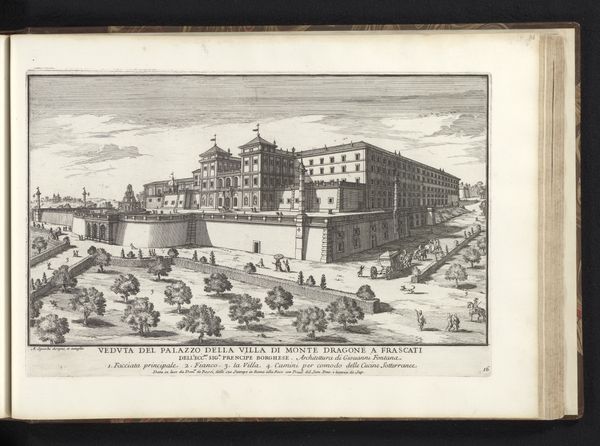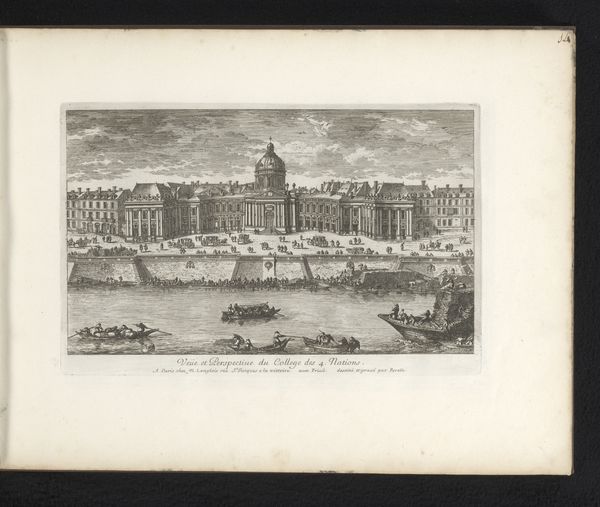
print, engraving
#
baroque
#
pen drawing
#
ink paper printed
# print
#
line
#
cityscape
#
history-painting
#
engraving
Dimensions: height 186 mm, width 279 mm
Copyright: Rijks Museum: Open Domain
Curator: Let's discuss this print by Adam Perelle, titled "Gezicht op de façade van de Tuilerieën," which roughly translates to "View of the facade of the Tuileries," created sometime between 1660 and 1695. Editor: My immediate impression is one of bustling activity, but rendered with such rigid, almost mathematical precision. The facade dominates, but it's the intricate patterns of movement below that really capture the eye. Curator: Absolutely. Consider the historical context—this image wasn’t just a landscape. The Tuileries represented the absolute power of the French monarchy under Louis XIV. This print, circulating widely, broadcast that power to a broad audience. The ordered activity is not just incidental; it reinforces the sense of control and grandeur. Note the architecture itself, the carefully positioned windows, and the dome, creating visual hierarchies of power. Editor: From a formal perspective, I’m drawn to the use of line. It's incredibly detailed, almost obsessive in its rendering of architectural elements and the figures. Look at how the artist uses hatching and cross-hatching to create a sense of depth and volume, especially on the façade. Curator: And that relates directly to the social implications. The architectural details were not merely aesthetic choices. The opulence, the scale – all functioned as signs of divine right, a visual language intended to impress and, frankly, intimidate. Furthermore, this viewpoint isn't neutral; it’s positioned to emphasize the dominance of the palace. Editor: True. The composition is very controlled. There's a clear foreground, middle ground, and background, each meticulously delineated. It directs your eye to follow a certain path, always leading back to the palace itself. I wonder if this was produced to be included in larger projects to consolidate the King's identity. Curator: Exactly! This image reinforces the status quo, embedding itself within a complex network of cultural production designed to sustain the King's image. Understanding it allows us insight to the power structures of the 17th century. Editor: Ultimately, it’s this tension between artistic technique and the embedded ideology that makes this seemingly straightforward cityscape so compelling. Curator: Agreed. It’s a testament to how even seemingly objective representations can be powerful vehicles for conveying specific cultural and political messages.
Comments
No comments
Be the first to comment and join the conversation on the ultimate creative platform.



